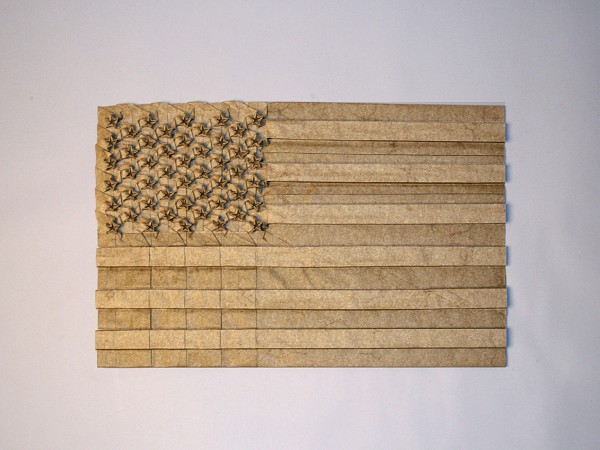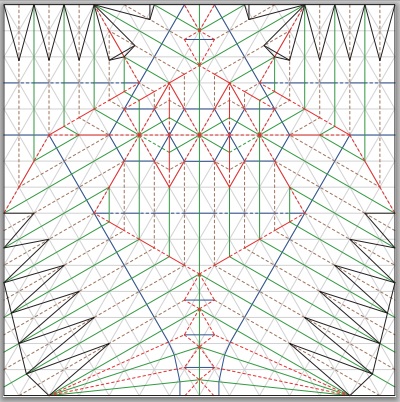Alison Brown (brown398@purdue.edu)
Pinar Temiz (ptemiz@purdue.edu)
Contents
Origami Groups
Introduction/History of Origami
Origami, despite what many math believe, is orignally thought to have begun in China. This art form was brought to Japan from China. Coming from the Japanese words oru(to fold) and kami(paper)origami was only at first only available for the weathly since paper was so expensive. Since the expense was so great, oragami was mainly used for ceremonies and religious events. However, as time passed and paper was produced on a larger scale, origami became available for both the rich and poor. For the same reason, people starting creating origami for art instead of for ceremonial/religous purposes. For a long time this art form was simply passed down from one generation to the next without writing. In fact the first written instructions were by Akisato Rito called "Thousand Crane Folding". Older forms of origami were simply paper folder to make a design such as a crane. However, modern origami is created by artists. Modern designs can even look like puzzles created by mathematicians. Akira Yoshizawa is considered one of the fathers of modern origami because he created a system of folding patterns, symbols, arrows, and diagrams to streamline this art. Now, more and more people are creating this art using mathematical principles and ideas. A few of the "mathematical origami pioneers" include Jun Maekawa, Peter Engel, Robert Lang, and Erik Demaine. All of the mathematicians use particular constructs in order to create the amazing origami structures seen today.
What are Origami Groups?
-Development of the math -Related Mathematicians
How it works
..the mathematics behind it all
Relation to other fields of mathematics
Origami relates in many ways to different fields of mathematics. For example, many teachers in high schools use origami to teach many topics in their curriculum. Areas included are problem solving, geometry, ratios, angles. logic, proofs, congruence, properties of parallel lines, and the list goes on. (Serenevy, 2003). One example Robert Lang gave in his TED talk was the fact that any origami figure can be unfolded and colored using only 2 colors. This would be a good example to show in a discrete mathematics class in high school (INSERT CITATION). There is also a fairly obvious connection to the field of geometry. Many geometric shapes and designs can be made with one sheet of square paper using different folds. Overall, even though the mathematics is starting to have a much deeper role in the creation of origami figures, there is a practical use for this math at a high school level relating to several different mathematical fields.
Importance of Origami Groups
-What are they used for? -Who uses this math? -Practicality
Examples
The following are examples of origami figures as well as their crease patterns.

Flag from 1 sheet of paperCrease Pattern for the Flag above
Frog created from 1 sheet of paper
Crease pattern for the frog origami above
Spider Created from one sheet of paper
Crease pattern for spider origami above
Interesting Links
-The following is a TED Talk given by Robert Lang discussing how interesting origami figures can be constructed thanks to particular mathematical rules.
http://www.ted.com/talks/robert_lang_folds_way_new_origami.html?quote=323
References
Aharoni, G. (2013). Origami swans. Retrieved from http://www.giladorigami.com/PG_Swans.html
PBS. (Nov. 30, 2009). Between the folds. Retrieved from http://www.pbs.org/independentlens/between-the-folds/history.html
Serenevy, A. K. (Feb. 2003). Where's the math in origami? Retrieved from http://math.serenevy.net/?page=Origami-WhereMath






